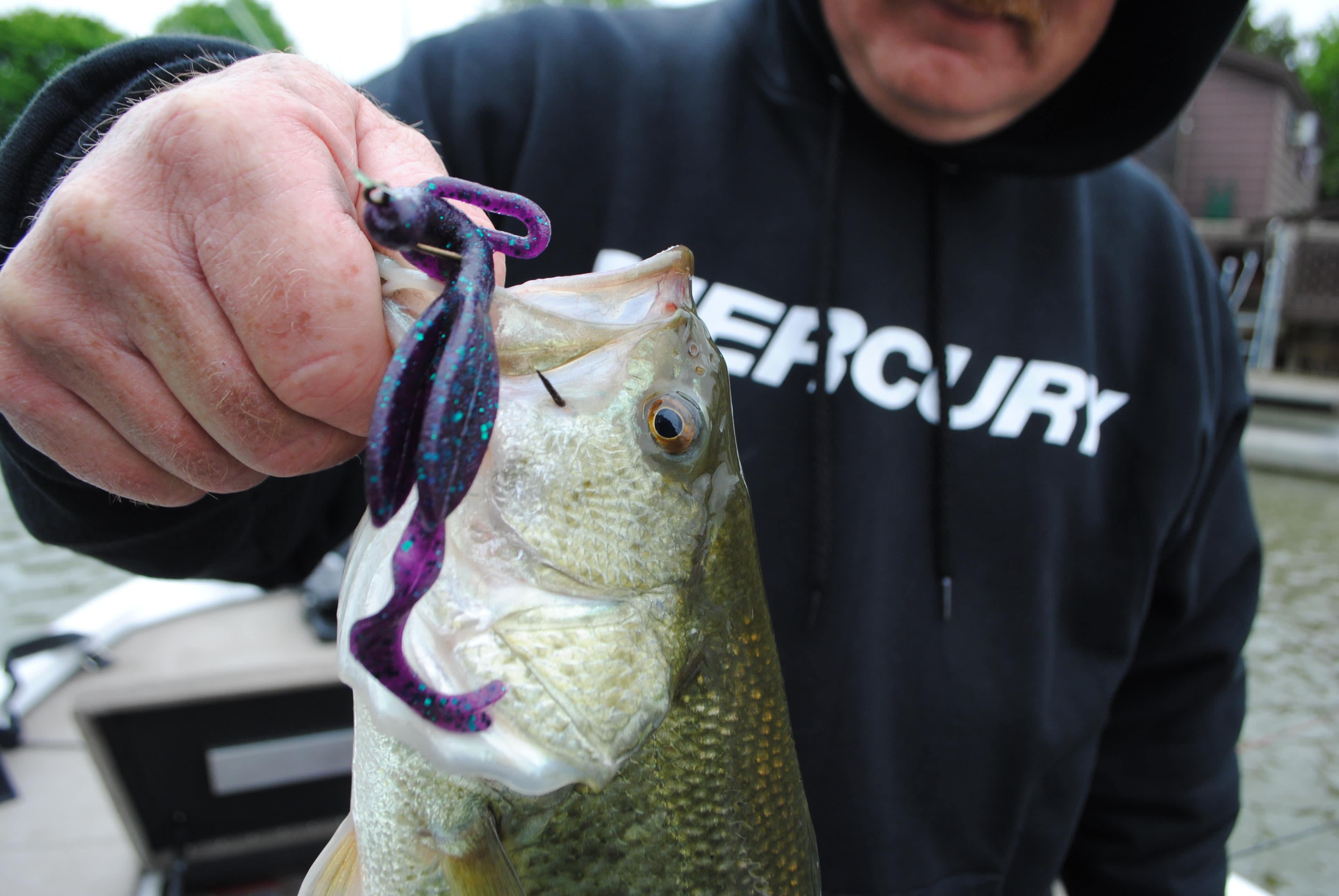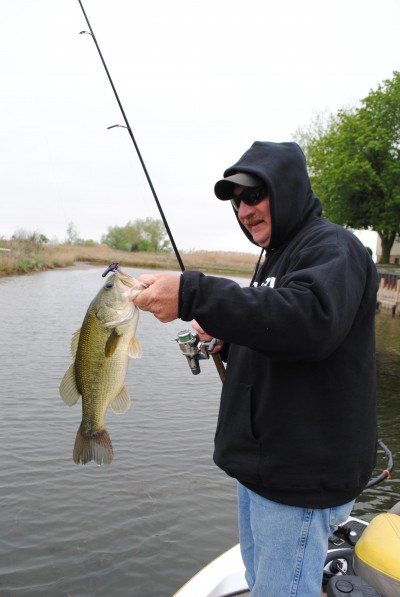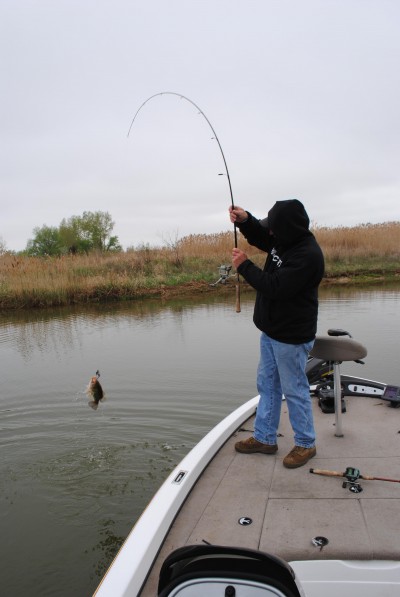Bountiful Bass Found in Saginaw Bay’s Canals
Bob Gwizdz 06.03.13

High winds the previous night had turned the what-had-been gin clear water of Saginaw Bay into chocolate milk, so our plan–to run out to the islands and tray to beat up on the smallmouths–was out the window.
Not to worry, said Bill Horton. We’d just have to catch fish inside.
Even in the canals, however, the water was dark and milky. But as we worked our way back toward the back of a canal, it cleared up enough to make it worth fishing. It didn’t take long; Horton hit a fish on his fourth of fifth cast with a June-bug colored Brush Hog (a plastic worm with a couple of pair of extra appendages). The fish came out of the water and back down into a weed line, but Horton kept the pressure on and hauled the two-and-a-half-pound largemouth into the boat. Turned out it was the first of many.

Mention bass fishing and Saginaw Bay and everyone immediately assumes you’re talking about the eye-popping smallies that have made the Bay one of the state’s best bass fisheries. But the largemouths are none too shabby, either. By the time we left that canal–and headed to the next one–we’d put eight largemouths, all from two to three pounds, into the boat.
It’s no secret that a fair number of Saginaw Bay largemouths pull into the cuts and canals in early spring. What many anglers don’t realize, Horton said, is that you can have good fishing targeting largemouth bass all season.
“They’re out there in two to four feet of water in the weeds and they’ll stay there all summer long,” said Horton, a 50-year-old autoworker and sometimes bass fishing guide. “Then in the fall, they’ll pull to the drop-off and stay there. But they never get any deeper than seven to nine feet.
“A lot of times in the summer, when the wind gets up and you can’t get out to the smallmouths, I’ll just stay inside and fish largemouths. They’ll be hunkered down in those weed mats and you just have to drop a worm in there.”
The next canal we entered had a better-defined line of weeds out a few feet from the seawall. We’d cast up against the seawall and hop the bait out, and if we didn’t have a bite by the time it hit the weed line, we’d crawl the bait through the vegetation. About half our fish came inside the weed line, the rest from any little opening in the weeds.
“That’s the kind of place you get them on the bay in the summer,” Horton said, “In weeds just like this. You find any little opening and drop that bait in there. You’ve got to get in there with the trolling wide-open–you can’t catch them fishing the outside edges. They’re on the inside or up in the weeds.
“You can’t even use a pig and jig because it’ll hang up in the weeds. You can get them on Senkos or sometimes I’ll drop-shot them, but if I do that I rig it so that worm doesn’t go down more than about six inches. And you lose a lot of drop-shot weights.”
Horton switched out his Brush Hog for a curly tailed plastic worm, occasionally setting it down to pick up a spinnerbait. The worm out-produced the motion bait by a fair margin, though Horton did manage to put some largemouths in the boat on the spinnerbait.
I stayed with the Brush Hog (why fix what ain’t broke, eh?) and continued to catch a fair number of fish, though I missed more than my share, too. A number of times, I’d feel the tick, watch the line tear off through the water, and set the hook on nothing. I had the feeling I was tossing that bait into spawning beds and the fish were picking it up and getting it out of there, rather than inhaling it. But there was so little visibility–no more than eight inches or so, anywhere–that we couldn’t see any beds. Still, some of the fish we caught had that tell-tale bloody tail indicating they were in the procreating business.

By the time we’d worked the canal system thoroughly, we’d boated 36 largemouths in less than three hours of fishing.
“Well, we’ve had the quantity,” Horton said. “Now we’re going for quality.”
Horton loaded up the boat and we trailered to Bayport, where he hoped we’d find some better fish. It wasn’t to be; there were plenty of largemouths in there–against seawalls, on the weed line, or under boat docks–but they were all running the same size: two to three pounds.
We stuck our nose out the end of the canal system into the Bay but the water was almost thick enough to plow. Horton pointed out weedy shallows where we’d have fished if the water was clear.
“I think there are a lot more largemouths spawning out here in the bay than there used to be,” he said. “In the summer, they like big baits. My favorite is a 10- to 12-inch worms. They’ll hit those better than a seven-inch worm. I don’t know if they’re out there eating water snakes or what.”
We called it a day in early afternoon, having boated well more than 50 largemouths, all of them at least keeper size, but no giants. Not unusual, Horton said.
“There’s lot of three-pound fish and some fours, but not many fives,” he said. “I guess that’s why smallmouths are the chosen fish–guys would rather catch two or three big fish than 50 largemouths.”
He may be right, but I sure wasn’t complaining.
You can reach Horton at 989-397-5053.
For more information on Michigan fishing go to michigan.org. Click here to purchase a Michigan fishing license online. Michigan’s annual Summer Free Fishing Weekend is this weekend, June 8-9–make sure you make it out on the water.

